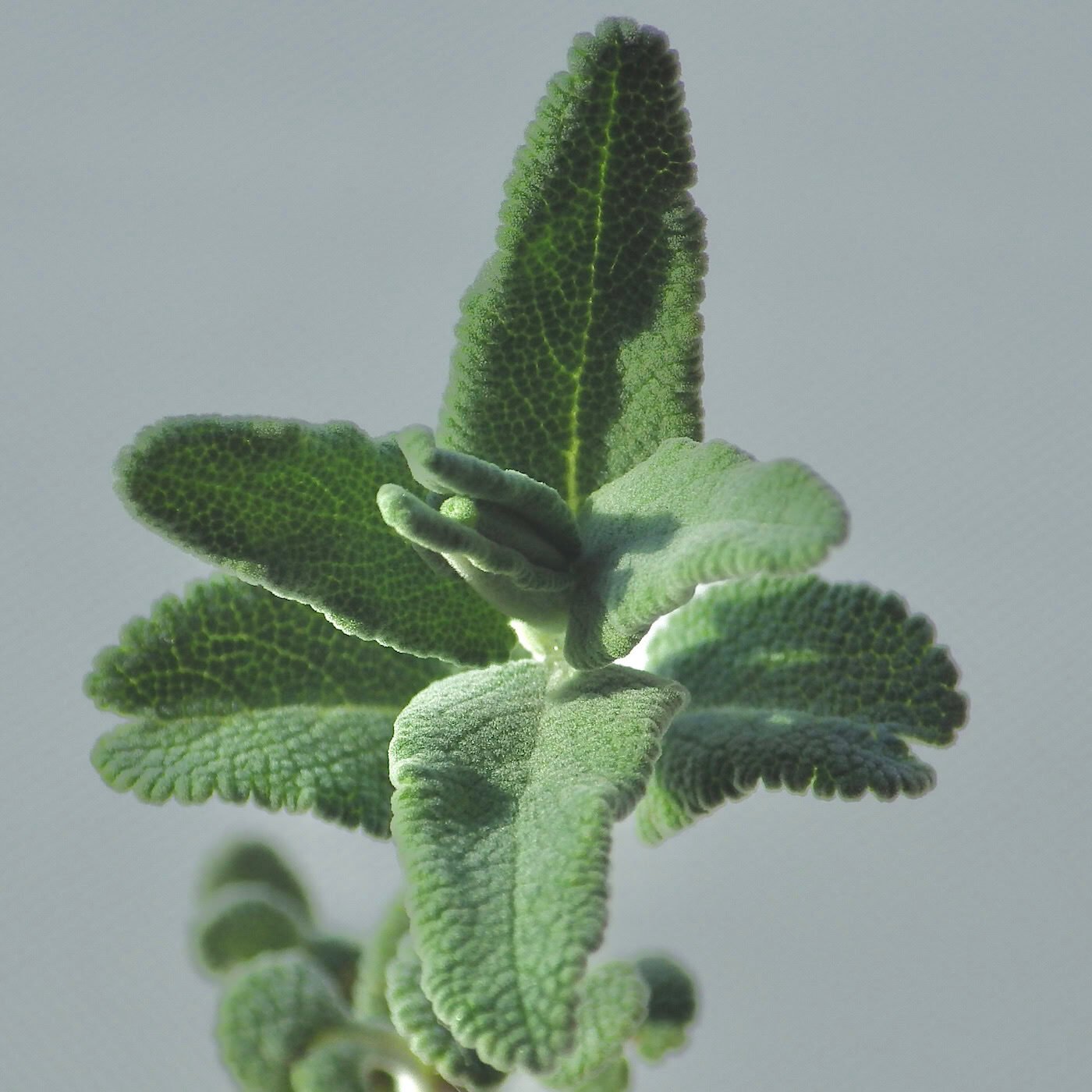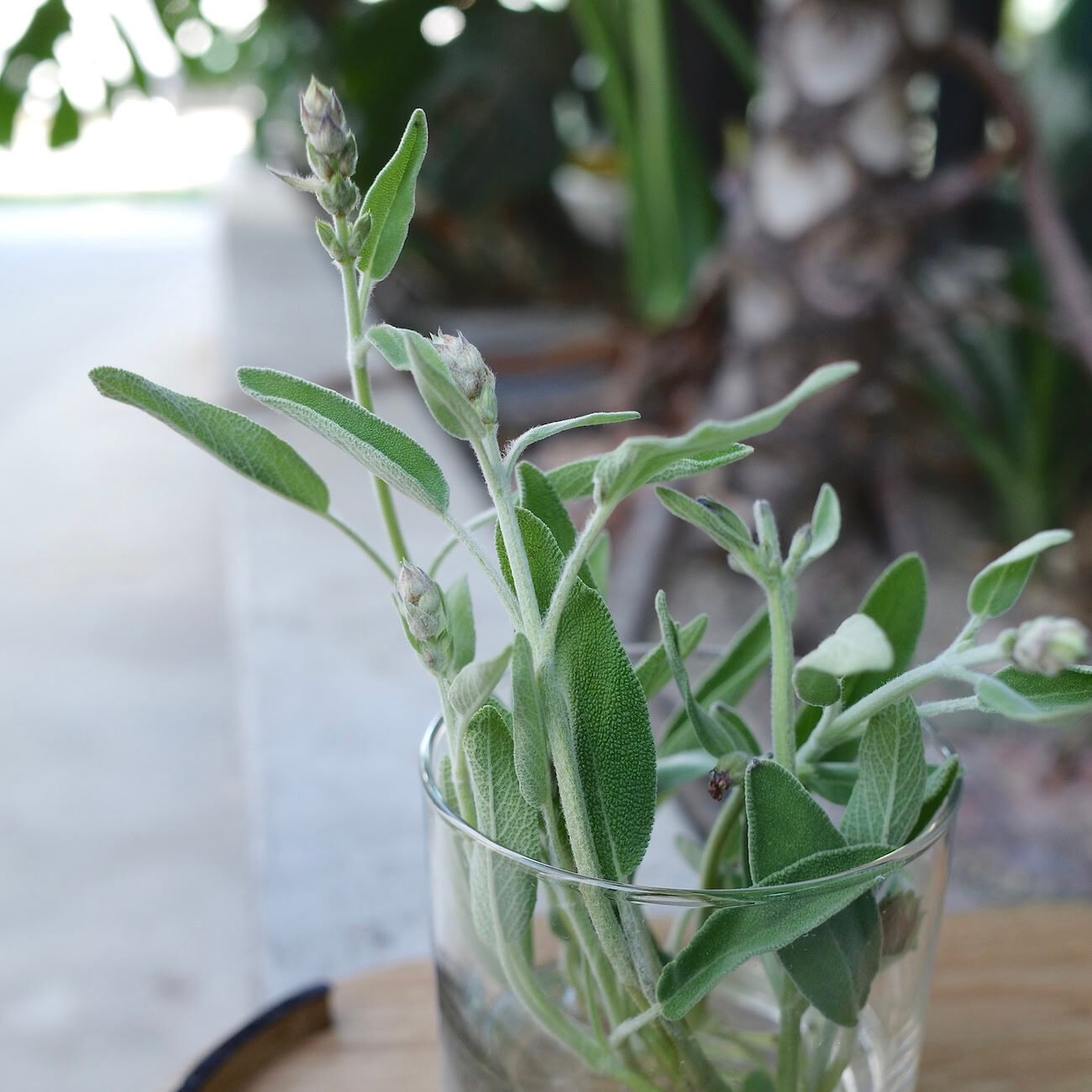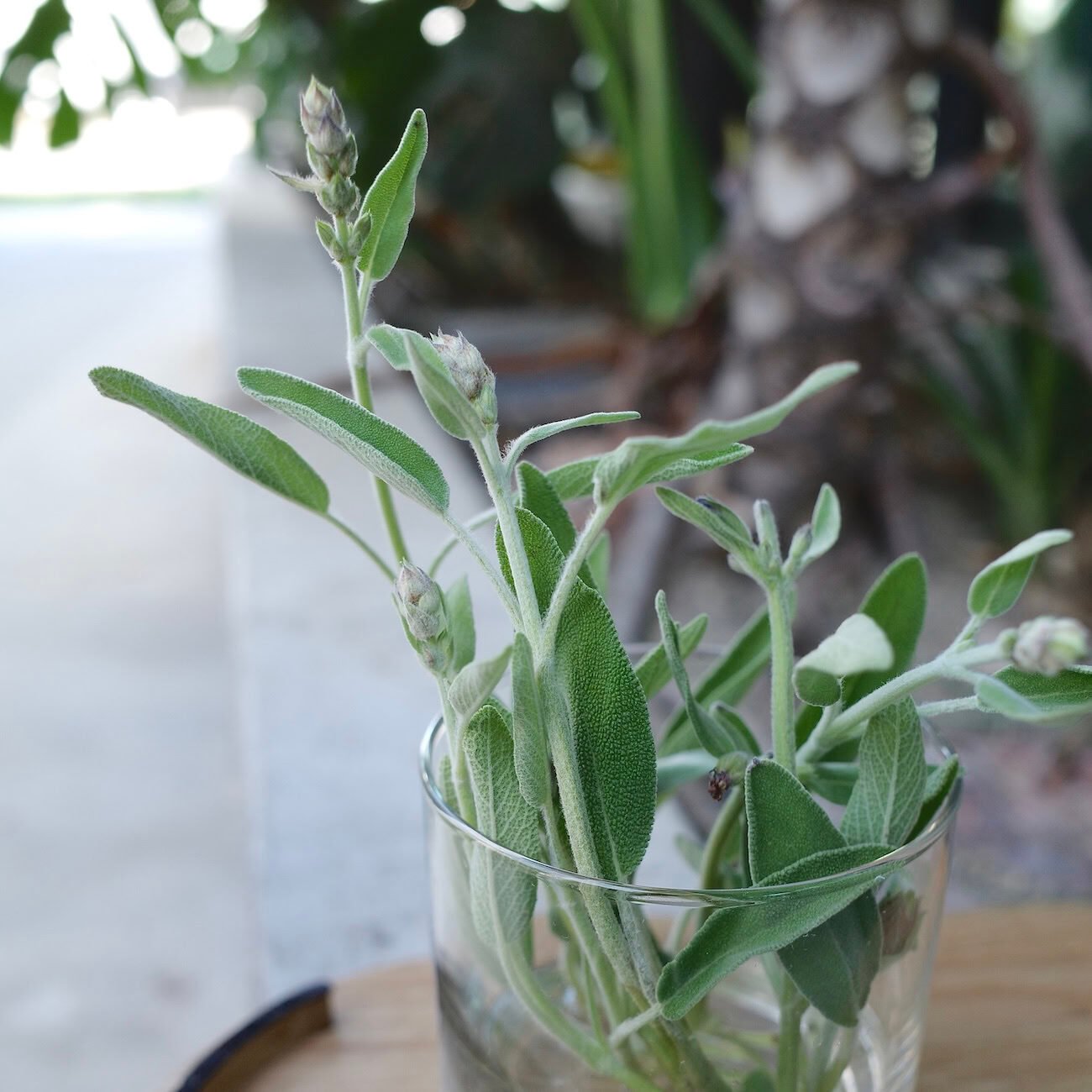Sage
Sage is the herb derived from the leaves of various species and cultivars in the genus Salvia, part of the mint family. There are approximately 900 species, but only a few are widely used in cooking. The most prominent is common sage (Salvia officinalis), with about 40 culinary cultivars, followed by Greek sage (Salvia fruticosa).

REGION OF ORIGIN
The Mediterranean. Sage is rooted in the sunny coastal hillsides of Southern Europe, North Africa, and the Middle East. For thousands of years, it has thrived in the wild alongside the region’s diverse and aromatic native flora.
PART & COLOR
Sage leaves are elongated and lance-shaped with a velvety, slightly hairy texture. Their silvery grey-green hue is so iconic that there's even a color named after it, "sage green." The stems are more woody than herbaceous and can range from pale green to a purplish hue.
HARVEST
Sage is a robust perennial that can be harvested multiple times throughout each growing season for several years. The leaves are most flavorful in late spring or early summer before the plant starts flowering. Harvest by hand, snipping the stems at an angle to encourage continuous growth. Only take a few stems at a time, especially in its first year. Drying a portion of your sage is wise as it ensures a year-round supply. To do this, bundle the stems together and hang them upside down in a well-ventilated area to preserve the essential oils.

FLAVOR & AROMA PROFILE
CULINARY USES
Sage has a serious affinity for rich meats like pork, lamb, and duck, but its earthy notes also complement hearty root vegetables and bean dishes. Fresh leaves can lend their brightness to salads and cocktails, and they pair beautifully with compound butters, allowing you to create a simple yet luxurious pasta sauce for ravioli or gnocchi.
Sage is key to stuffing, where it uplifts the comforting taste of bread, onions, and various spices. You can also lightly fry fresh sage for a crispy garnish that contrasts nicely with creamy dishes. Dried sage can slowly release its depth into soups, and just a sprinkle can make a simple sausage magnificent.



